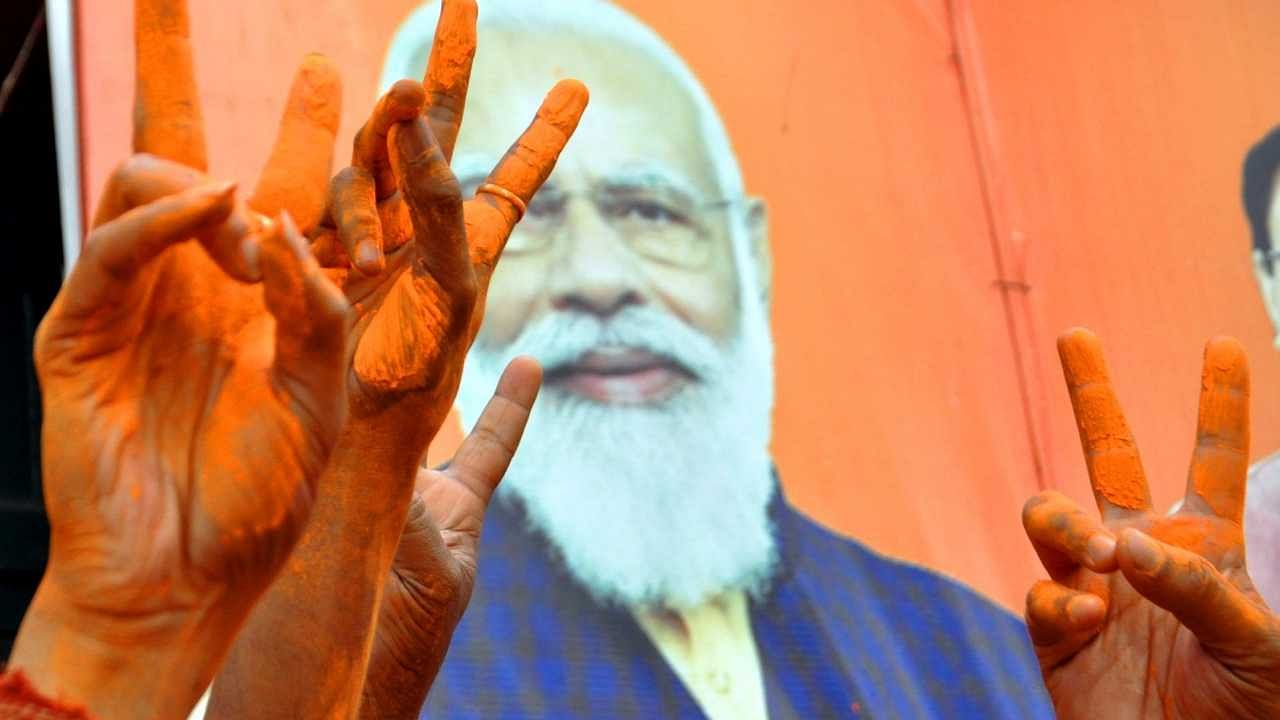
In the ’90s, K N Govindacharya, then a young ideologue and general secretary of the Bharatiya Janata Party (BJP) who later fell out with the party, convinced the Rashtriya Swayamsewak Sangh (RSS) to take up social engineering, i.e. adopting the OBCs and the Dalits into the Hindutva fold. It is this doctrine that has paved the way for the huge success of the party in recent times, particularly in North India.
After becoming Prime Minister, Narendra Modi added a new dimension to it. He geared the whole party machinery to win the hearts of the Christians and other non-Hindus of the Northeast.
In 2014, the BJP was just a marginal force in the Northeast region. In 2023, it is firmly in the saddle as the ruling party in Assam, Tripura, Arunachal Pradesh, and Manipur, and is a key player in Nagaland. Interestingly, except for Assam and Tripura, no other Northeastern state has a Hindu majority.
In the recently held assembly elections, apart from retaining power in Tripura, the BJP has emerged as an indispensable partner of the ruling coalition of Nagaland by winning 12 seats, while the Nationalist Democratic Progressive Party (NDPP) won 25 of the 60 assembly seats. Nagaland is an 89.9 per cent Christian state.
How could all these feats be achieved in such a short time in these non-Hindu majority states? This is not some magic or a fluke, and this change is real.
Three factors have changed the tides in favour of the BJP in this region of motley combination of tribes and other populations, where each state has a varied and different equation. They are: Replacing the Congress (both organisationally and in vote shifting pattern), mainstreaming the Northeast; and, the situational advantages.
On March 2 when the election results were announced, most of the national and regional channels covered it from the morning till afternoon, though it involved the fate of only three tiny Northeast states. A decade ago, even channels in neighbouring West Bengal would not have given such a coverage. It shows the Northeast has successfully been weaved into the ethos of ‘mainstream’ India in just a decade.
It results in greater identification of the people of the region with India, almost obliterating the alienation factor that once bred separatist feeling and supported extremist organisation. The Modi government has tried to create such an environment by forming NEDA (North-East Democratic Alliance), by appointing a minister for the region and giving Himanta Biswa Sarma the charge of talking to the leaders of the region. It also announced a plethora of projects for development and, more importantly, campaigned for those actively.
Along with such efforts, the BJP utilised the cravings of the small states to have a good relationship with the Centre. Herein came another factor for its success: replacing the Congress, which itself has weakened itself, as was evident from Mukul Sangma switching over to the Trinamool Congress with 11 other MLAs in 2021.
In 2016, the BJP formed the government for the second time in Arunachal Pradesh (after Gagong Apanag's in the previous decade) when Chief Minister Pema Khandu switched over from the Congress to the BJP, thus giving it its second government (after Assam) in the region, and retained it in 2019. In 2017, thanks to former Congressman N Biren Singh, the BJP won Manipur and retained it in 2022.
Winning these two non-Hindu majority states emboldened the BJP, and it tried to forge alliance with dominant non-Congress parties in Meghalaya and Nagaland, two highly Christian-dominated states. Like Arunachal Pradesh and Manipur, in Nagaland and Meghalaya too traditionally the electoral battle was between the Congress and the regional forces. But unlike Arunachal Pradesh and Manipur, Hindus plus traditional other faiths did not form the majority in Nagaland and Meghalaya.
However, after N Biren Singh joined the BJP in Manipur, a state with a 41.29 per cent Christian population, Conrad Sangma of Meghalaya and Neipheu Rio of Nagaland risked having the BJP along as junior partners of the state alliance.
Here, the third factor, the situational advantage, helped the BJP in Nagaland, where it has firmly entrenched itself as a valuable junior partner. Neipheu Rio succeeded to emerge strong by eliminating the Congress and weakening other regional stalwarts. His gamble paid off while the BJP helped him with all the resources at its disposal. Now it is evident that the people of Nagaland have accepted the BJP as it has won 12 seats.
Though the BJP has suffered setbacks in Meghalaya, it is advancing in the Northeast quite comfortably. This advancement is for real, for it has decimated and replaced the Congress that for many decades represented the mainstream in the region.
(Diptendra Raychaudhuri is a Kolkata-based journalist and author.)
Disclaimer: The views expressed above are the author's own. They do not necessarily reflect the views of DH.